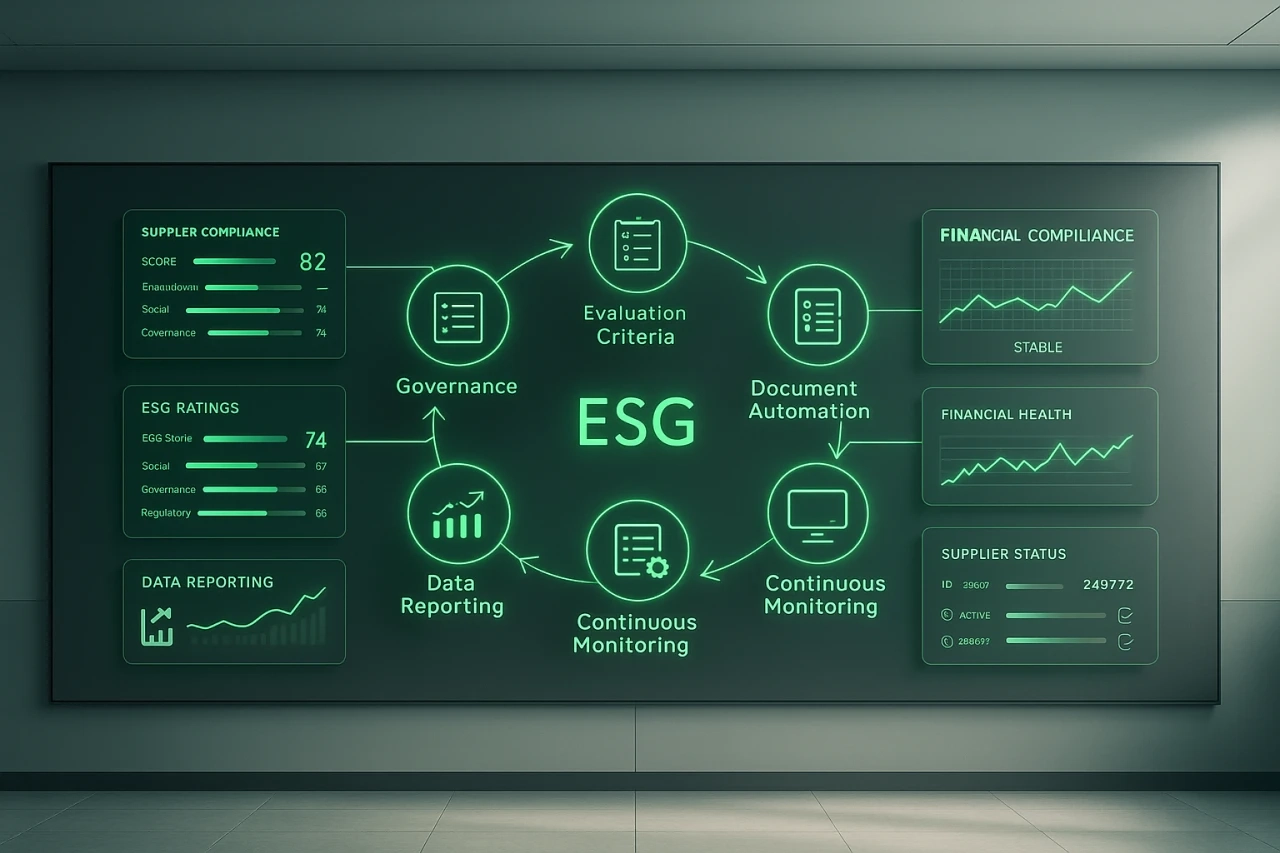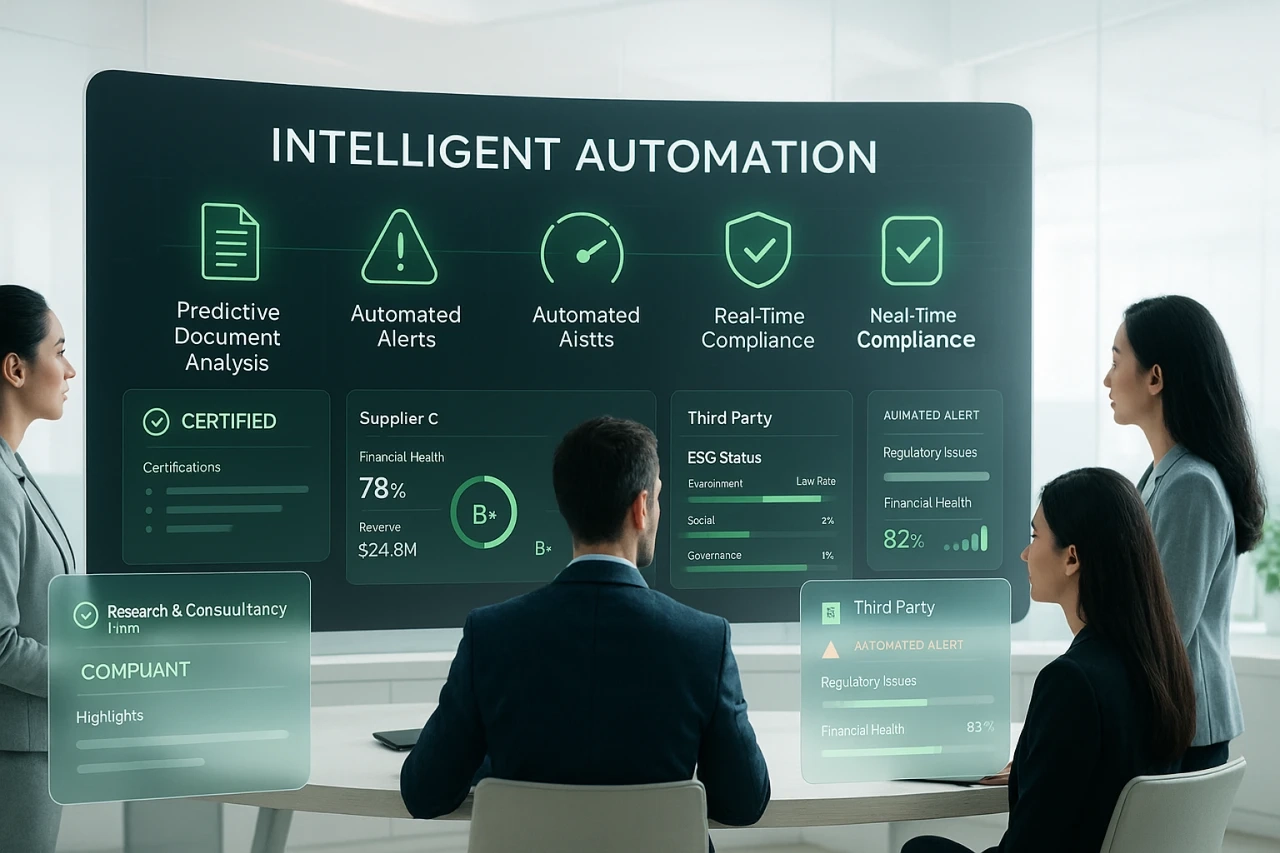Decarbonization in Construction: Challenges and Solutions for Managing Subcontractors and Craftsmen (Scope 3)
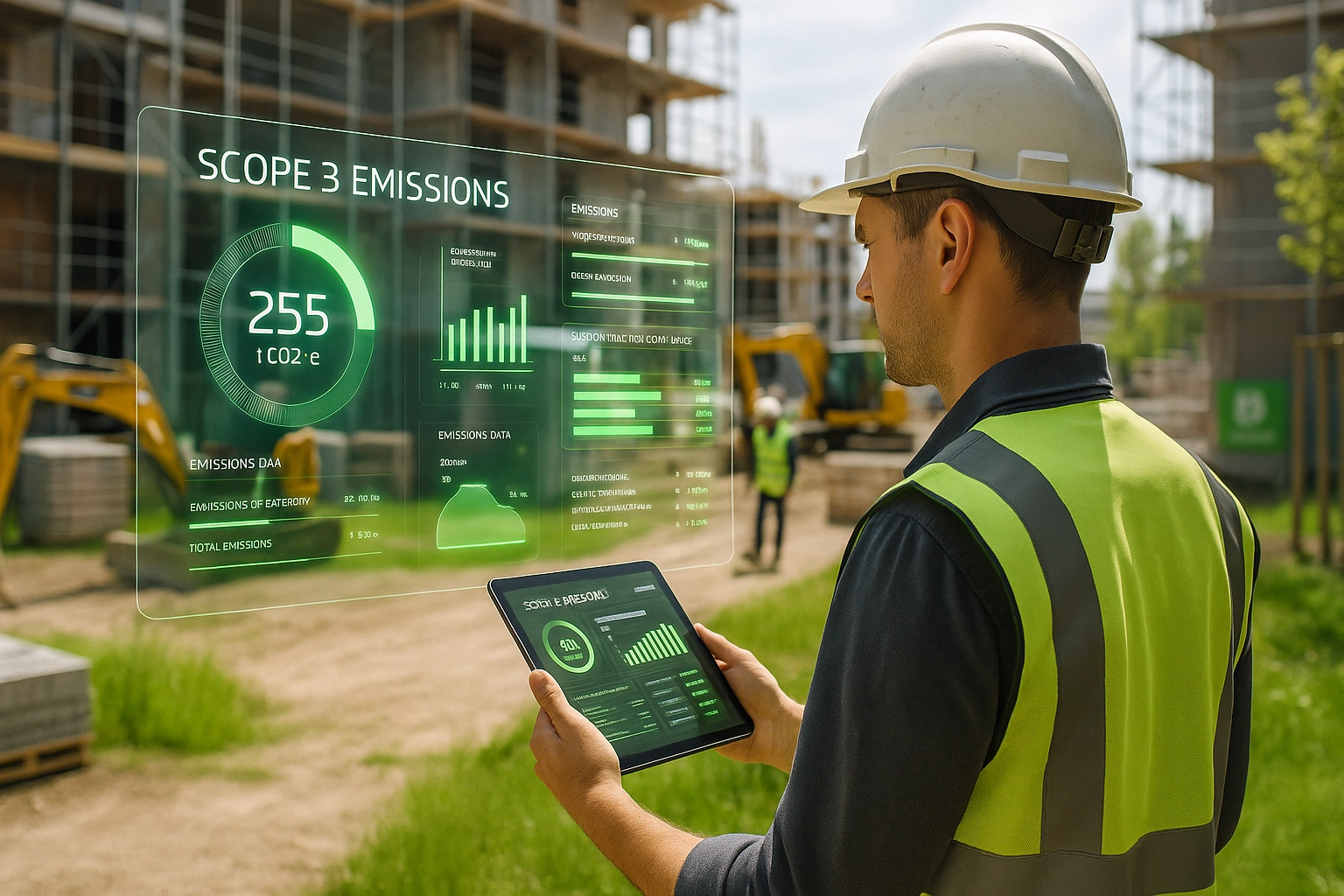
Decarbonization is now a major challenge for businesses and public stakeholders. In the Construction and Public Works (BTP) sector, this issue is central, as it is one of the largest emitters of greenhouse gases (GHG), responsible for 39% of the growth in energy-related carbon emissions. Scope 3 decarbonization in construction is particularly complex because, according to recent studies, the majority of emissions come from Scope 3, which includes suppliers, subcontractors, and craftsmen involved in the value chain.
In this context, construction companies must not only manage their direct carbon footprint (Scope 1 and 2) but also engage their partners to reduce indirect emissions. Subcontractors and craftsmen play a key role in this equation.
This article explores the challenges and offers concrete solutions to support the sector in this transition, particularly through technological tools such as Aprovall360.
Key Decarbonization Challenges in Construction
Assessing all third parties
Evaluating third parties (suppliers, subcontractors, etc.) is essential to measure and reduce the Scope 3 carbon footprint. It helps identify partners already engaged in decarbonization efforts and those who need support. This evaluation relies on clear criteria such as carbon audits, process maturity, and commitments validated by environmental labels like the Science Based Targets initiative (SBTi).
Document control and regulatory compliance
Managing documents related to environmental compliance (certificates, carbon assessments) is crucial to ensure transparency and accountability among third parties. Centralizing this information provides an overview of environmental performance and ensures compliance with regulations such as RE2020, the CSRD directive, or the Climate and Resilience Law.
Since January 1, 2025, RE2020 entered its second implementation phase with new, stricter thresholds, significantly increasing carbon footprint requirements:
- For single-family homes, the Construction Carbon Index (IC Construction) dropped from 640 to 530 kg CO₂/m², a 17% reduction.
- For multi-family housing, the threshold was lowered to 650 kg CO₂/m² compared to the previous 740 kg CO₂/m².
This evolution is part of RE2020’s progressive calendar, with even stricter thresholds planned for 2028 and 2031, aiming for carbon neutrality by 2050. A simplification decree published at the end of December 2024 introduced some adjustments for small apartments under 40 m² and single-family homes in H2d and H3 climate zones.
The role of AI in document analysis
Artificial intelligence plays a key role in large-scale data analysis and process automation. It saves time and delivers accurate results to guide strategic decisions. For example, AI can identify priority third-party partners based on their carbon impact and recommend actions, while reducing supplier fatigue caused by repetitive document requests.
Decarbonization and climate goals
Reducing carbon emissions is an essential lever to achieve climate targets set by international agreements. According to the National Low Carbon Strategy (SNBC), the construction sector must reduce its emissions by 95% by 2050 compared to 2015. This transition requires both internal process optimization and external partner engagement, including:
- Optimized resource management on construction sites
- The use of low-carbon materials
- Reducing transport needs
Data pooling and integration
To improve efficiency, companies must pool data and actions with subcontractors and craftsmen. Integration tools facilitate centralized information, enabling more coherent monitoring and better planning of low-carbon projects. This collaborative approach also reduces the administrative burden for subcontractors, especially since document submission is completely free via a secure platform.
Subcontracting and holistic evaluation
Subcontractor evaluation must be holistic. Effective subcontractor management in construction includes both financial (financial score) and environmental criteria, ensuring a balanced view of performance. A responsible approach builds long-term relationships based on trust and transparency while meeting the growing ESG requirements of both public and private markets.
Decarbonization: A Major Challenge for Construction
The construction sector is responsible for a significant share of GHG emissions. Most of these emissions come from Scope 3 activities, such as:
- Production of construction materials (concrete, steel, etc.), with cement alone accounting for 7% of global GHG emissions
- Transport of materials and teams to construction sites
- Waste management from construction work
- Energy consumption on production sites and worksites
Major construction companies are also driving low-carbon innovation. For instance:
- A large group recently tested a plant-based asphalt in Haute-Garonne for roadworks.
- Others have opted for geothermal energy in concrete prefabrication processes, particularly for the critical drying phase.
These initiatives show that even traditionally carbon-intensive materials can be reimagined.
To address these challenges, collecting and analyzing environmental data from partners is essential to measure the overall carbon footprint and implement concrete action plans. These include short-term measures like logistics optimization and long-term strategies like energy-efficient building renovations. Notably, emissions related to building use decreased by 12 MtCO2e between 2019 and 2022, proving that significant progress is achievable.
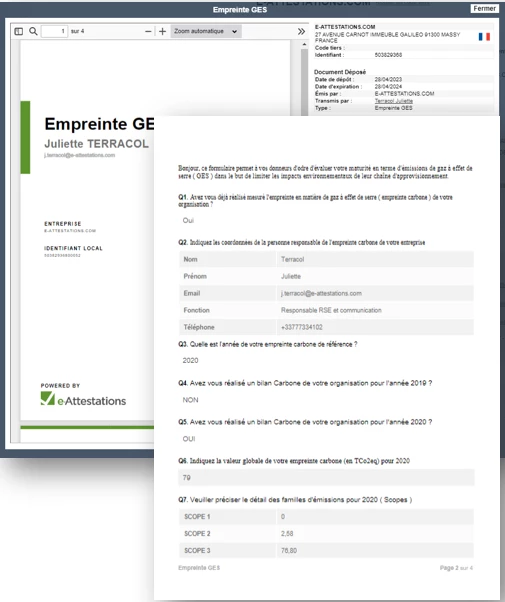
How to Assess and Reduce the Carbon Footprint of Subcontractors
Data collection: a crucial step
Data collection is the first step in assessing the carbon footprint. With tools like Aprovall360, companies can:
- Centralize supplier and subcontractor data
- Automate document requests (carbon audits, certifications)
- Identify missing information for a complete view
- Reduce subcontractors’ administrative burden through a shared pay-to-collect model
Analyzing third-party commitments
Once data is collected, it is essential to evaluate the concrete actions taken by third parties to reduce their carbon footprint. Labels such as SBTi validate these commitments. By integrating standardized criteria, companies can ensure data reliability and identify partners most advanced in their decarbonization journey, facilitating alignment with corporate decarbonization goals.
Do you want to optimize your third-party evaluation strategy in the construction sector?
Discover how Aprovall can support you in implementing an effective ESG strategy for your supply chain.
Measuring operational maturity
Operational maturity refers to subcontractors’ ability to deploy sustainable and effective decarbonization actions. A detailed analysis helps distinguish advanced partners from those needing support. Key indicators include the percentage of recycled materials used, adoption of bio-based materials, and waste reduction.
| Maturity level | Characteristics | Recommended actions |
|---|---|---|
| Beginner | Little or no carbon footprint measurement | Training and awareness |
| Intermediate | Partial measurement, some actions in place | Targeted support, best practice sharing |
| Advanced | Defined carbon strategy, measurable objectives | Strategic partnership, innovation sharing |
Technological Solutions for Decarbonization in Construction
Aprovall360: a dedicated decarbonization module
Among available solutions, Aprovall360 offers a specific module to facilitate carbon data collection and analysis:
- Automated workflows: to request documents from subcontractors and centralize them
- Commitment detection: third-party engagement levels are automatically identified
- Carbon footprint measurement: accurate Scope 3 footprint calculation
- Construction-specific expertise: solutions tailored to industry needs
Increasing completion rates in decarbonization pathways
With Aprovall360 automation and dynamic dashboards, companies can increase decarbonization pathway completion rates by 30 points. Centralized data allows precise progress tracking and simplifies regulatory reporting, including compliance with CSRD and RE2020.
Dashboards to drive actions
Visual dashboards track actions and progress, making decision-making easier. They provide an overview by project, partner, or worksite, highlighting risks and priorities. This data-driven approach optimizes resources and maximizes impact, making decarbonization more effective and measurable.
Benefits of Decarbonization for Construction Companies
- Reduced emissions: direct contribution to national climate targets, aiming to cut emissions from 45 MtCO₂ to 30 MtCO₂ by 2030 in construction
- Improved eco-responsible image: a key asset in public and private tenders
- Regulatory compliance: anticipating standards like RE2020 and RT 2024 (mandatory low-carbon materials since Jan 1, 2025)
- Enhanced competitiveness: meeting ESG criteria strengthens market positioning
- Cost optimization: efficient resource management reduces expenses
- Innovation: adopting low-carbon technologies fosters bio-based and geo-sourced solutions
Innovative projects are emerging to tackle decarbonization challenges. For example, in Lyon, a developer launched a building with no heating or air conditioning in the Confluence district. This building guarantees occupants a maximum of 26°C in summer and no lower than 22°C in winter, proving that smart bioclimatic design can eliminate the need for traditional energy-intensive systems.
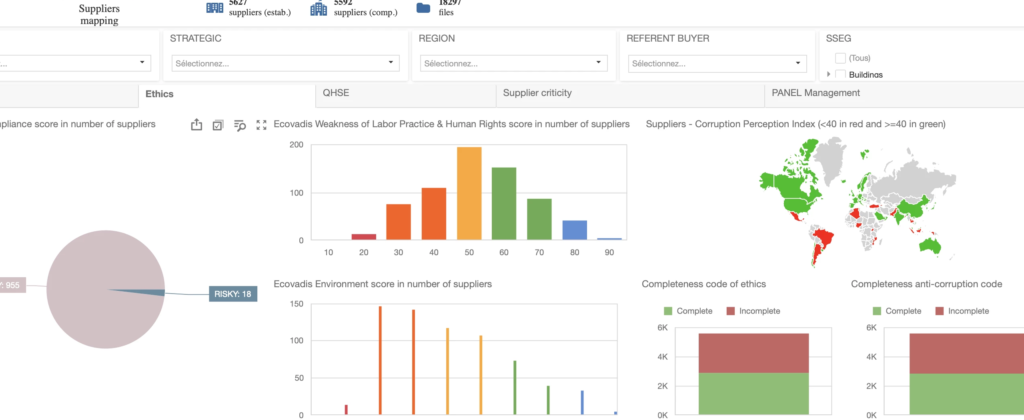
The Role of Subcontractors and Craftsmen in the Value Chain
Subcontractors are a vital link in the construction value chain. Their involvement in decarbonization is indispensable to achieving overall goals.
- Awareness and training: support subcontractors in adopting sustainable practices
- Encouraging certified commitments: prioritize partners validated by labels such as SBTi
- Pooling best practices: share feedback to accelerate transition
- Developing local supply chains: favor local resources to reduce transport impact
- Collaborative innovation: co-develop low-carbon solutions adapted to project needs
In conclusion, decarbonizing construction requires a collaborative approach involving all value chain stakeholders.
Technological tools like Aprovall360 support this transition by enabling precise evaluation and effective monitoring of subcontractors and craftsmen. With third-party governance tailored to climate challenges, construction companies can not only reduce their carbon footprint but also gain competitiveness in a market increasingly driven by environmental performance.
Ready to Transform Your Approach to Decarbonization in Construction?
Our experts are here to help you design a third-party evaluation strategy tailored to the specific challenges of the construction sector.
These articles might interest you
-
 16 July 2025TPRM & Innovation: How Procurement Departments Are Becoming Catalysts for Product PerformanceSecteurInnovation is no longer a luxury. For industries such as manufacturing, construction, luxury goods, or retail, it is a strategic necessity — essential for differentiation, regulatory compliance, and staying competitive in increasingly volatile markets. As products become more complex and development cycles accelerate, Procurement Departments are being called to the forefront. Their mission goes far […]
16 July 2025TPRM & Innovation: How Procurement Departments Are Becoming Catalysts for Product PerformanceSecteurInnovation is no longer a luxury. For industries such as manufacturing, construction, luxury goods, or retail, it is a strategic necessity — essential for differentiation, regulatory compliance, and staying competitive in increasingly volatile markets. As products become more complex and development cycles accelerate, Procurement Departments are being called to the forefront. Their mission goes far […]Read more
-
 02 June 2025The 6 Pillars of an Effective Supplier Evaluation SolutionSecteurAccording to a 2025 Accenture study, 63% of companies are undergoing transformation. As a result, CIOs, procurement managers, and compliance officers are rethinking their approach to third-party governance. In both public and industrial sectors, it is no longer just about collecting administrative documents, but about structuring supplier relationship management to sustainably strengthen operational resilience. Adopting a collaborative evaluation solution based […]
02 June 2025The 6 Pillars of an Effective Supplier Evaluation SolutionSecteurAccording to a 2025 Accenture study, 63% of companies are undergoing transformation. As a result, CIOs, procurement managers, and compliance officers are rethinking their approach to third-party governance. In both public and industrial sectors, it is no longer just about collecting administrative documents, but about structuring supplier relationship management to sustainably strengthen operational resilience. Adopting a collaborative evaluation solution based […]Read more
-
 05 June 2025Automated Evaluation Solutions: How to Streamline Without Sacrificing QualitySecteurAutomating evaluations is becoming an essential step for organizations looking to strengthen their third-party governance. IT decision-makers, especially in construction, industry, and the public sector, are seeking to combine efficiency and time savings with uncompromising quality assurance. Given concerns around the reliability of automation tools and the need for consistent performance, it’s crucial to debunk myths with recent advances in AI and intelligent […]
05 June 2025Automated Evaluation Solutions: How to Streamline Without Sacrificing QualitySecteurAutomating evaluations is becoming an essential step for organizations looking to strengthen their third-party governance. IT decision-makers, especially in construction, industry, and the public sector, are seeking to combine efficiency and time savings with uncompromising quality assurance. Given concerns around the reliability of automation tools and the need for consistent performance, it’s crucial to debunk myths with recent advances in AI and intelligent […]Read more
-
 14 January 2025ESG and Supply Chain: Emerging Challenges for 2025SecteurLa transformation ESG révolutionne la supply chain en 2025, devenant un impératif stratégique pour toute entreprise moderne. La directive CSRD, entrée en vigueur depuis janvier 2024, impose aux entreprises européennes une transparence totale sur leurs impacts environnementaux et sociétaux. Cette évolution réglementaire majeure s’accompagne de nouvelles exigences comme le CBAM (Carbon Border Adjustment Mechanism) et […]
14 January 2025ESG and Supply Chain: Emerging Challenges for 2025SecteurLa transformation ESG révolutionne la supply chain en 2025, devenant un impératif stratégique pour toute entreprise moderne. La directive CSRD, entrée en vigueur depuis janvier 2024, impose aux entreprises européennes une transparence totale sur leurs impacts environnementaux et sociétaux. Cette évolution réglementaire majeure s’accompagne de nouvelles exigences comme le CBAM (Carbon Border Adjustment Mechanism) et […]Read more
